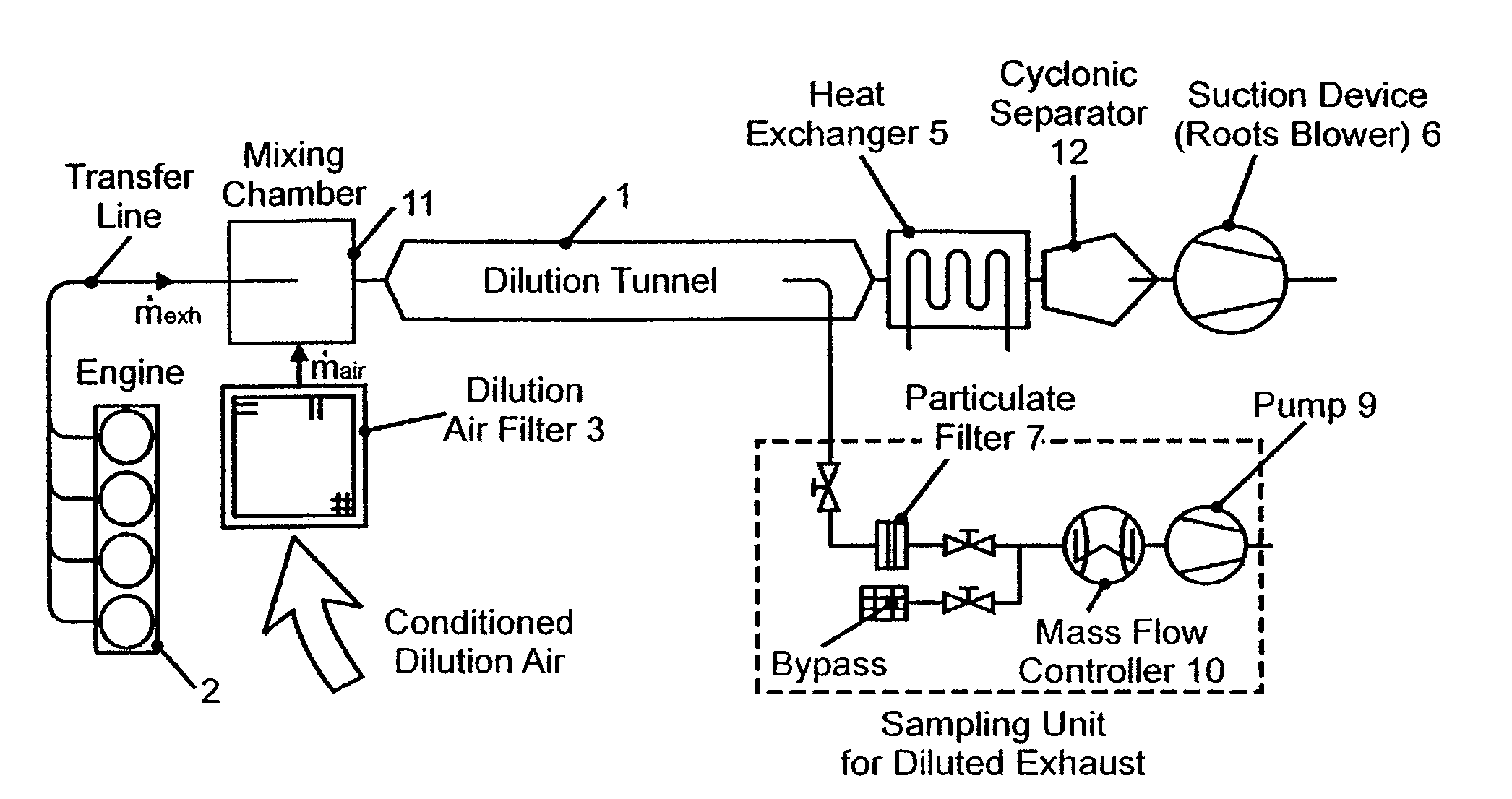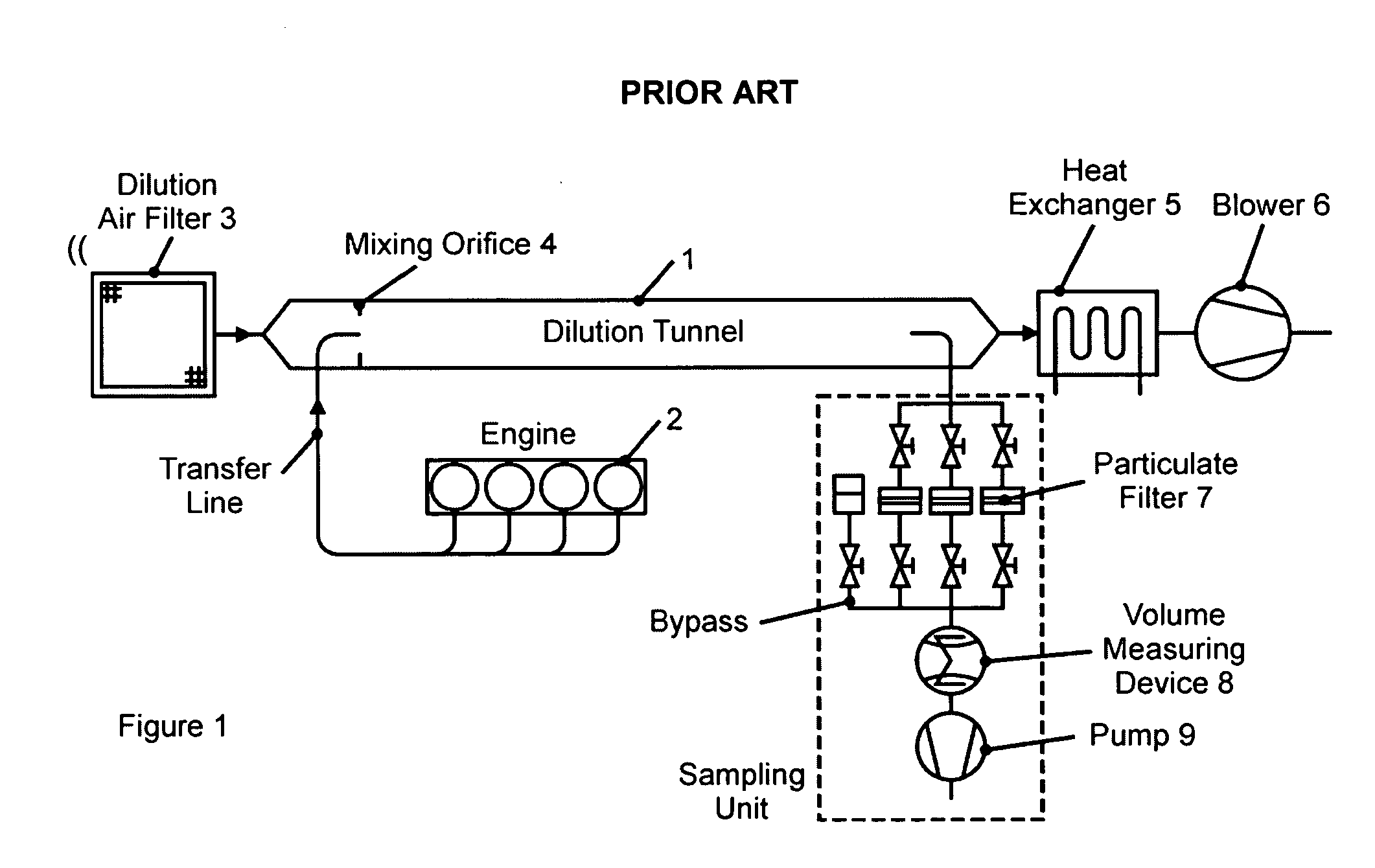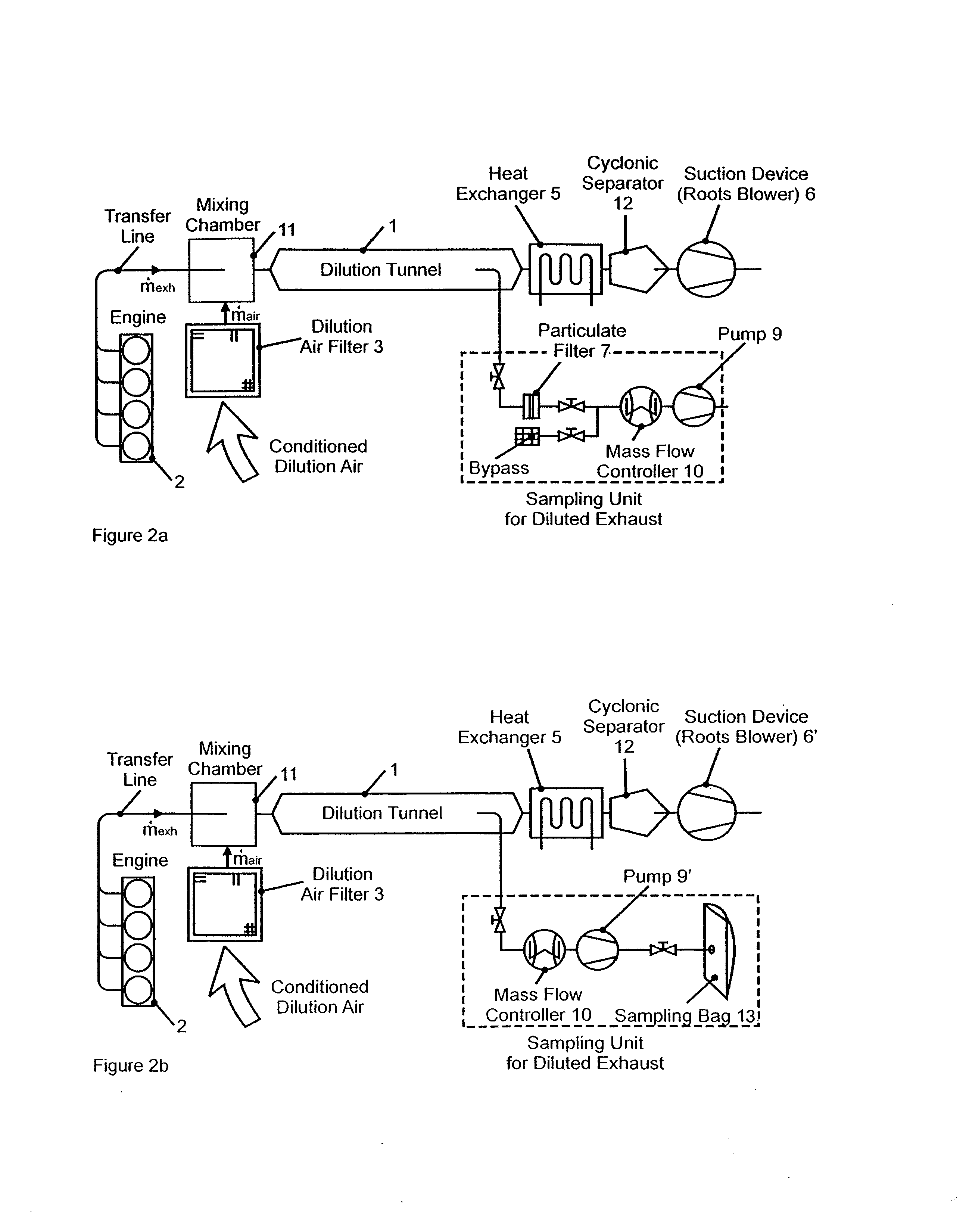Method and device for the measurement of exhaust gas from internal combustion engines
a technology of exhaust gas and internal combustion engine, which is applied in the direction of withdrawing sample devices, structural/machine measurement, instruments, etc., to achieve the effects of fast dynamic response, economical and technically simple solutions, and gradual adjustmen
- Summary
- Abstract
- Description
- Claims
- Application Information
AI Technical Summary
Benefits of technology
Problems solved by technology
Method used
Image
Examples
Embodiment Construction
[0043]As illustrated in FIG. 2a, the exhaust from a diesel engine 2 is first conducted to a mixing chamber 11 in which it is mixed with filtered dilution air, and is then conducted to a dilution tunnel 1. At the end of the dilution tunnel, a partial sampling volume flow of the diluted exhaust-air mixture is extracted into a sampling unit and is drawn through a filter holder by means of a vane-type rotary pump 9. The filter holder can hold Teflon-coated fiberglass filters 7, for example. A mass flow controller 10 proportionally controls the partial sampling volume flow. The particulate charge of the filter 7 is measured by means of a pressure sensor (not shown).
[0044]Downstream from the dilution tunnel 1 and the extraction point for the partial sampling volume flow, the diluted exhaust-air mixture passes through a heat exchanger 5 which cools it to a defined temperature, for example to approximately 25 C., before it travels through a cyclone 12 to a Roots blower 6. The purpose of the...
PUM
| Property | Measurement | Unit |
|---|---|---|
| temperature | aaaaa | aaaaa |
| mass | aaaaa | aaaaa |
| Constant Volume Sampling method | aaaaa | aaaaa |
Abstract
Description
Claims
Application Information
 Login to View More
Login to View More - R&D
- Intellectual Property
- Life Sciences
- Materials
- Tech Scout
- Unparalleled Data Quality
- Higher Quality Content
- 60% Fewer Hallucinations
Browse by: Latest US Patents, China's latest patents, Technical Efficacy Thesaurus, Application Domain, Technology Topic, Popular Technical Reports.
© 2025 PatSnap. All rights reserved.Legal|Privacy policy|Modern Slavery Act Transparency Statement|Sitemap|About US| Contact US: help@patsnap.com



